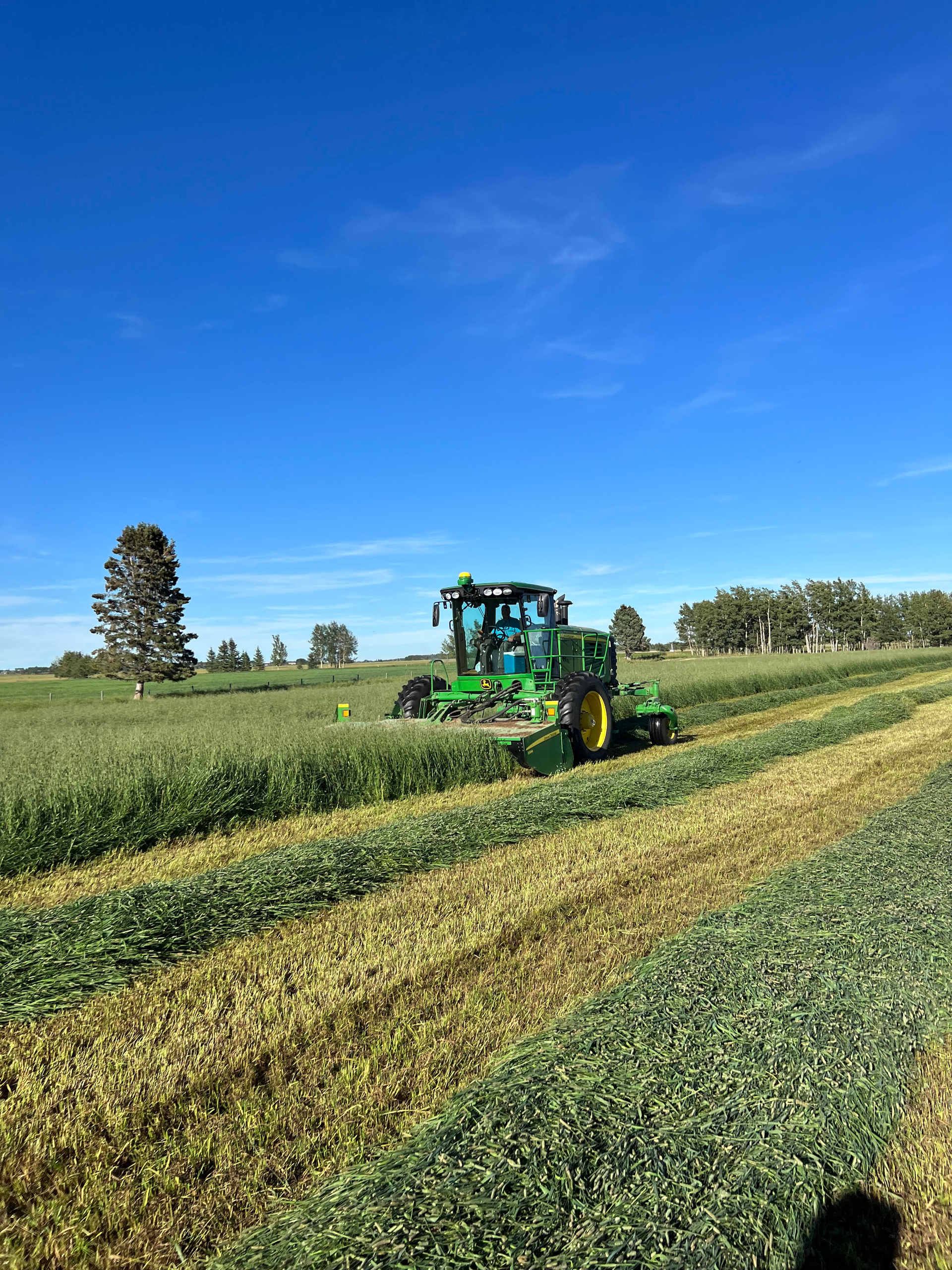Growing hay has many complexities and challenges that are factored into producing a high-quality product. Having prime growing conditions is just one of the essentials for a strong hay crop, starting with location. Other factors are adequate rainfall In May and June. Rainfall In July Is too little too late. Excessive moisture after June can make for a disastrous crop. Both rain and high humidity during harvest also affect crop quality. So, for Instance, a crop can be baled “dry” but If the moisture was too high during baling (greater than 12%), hay will become dusty and/or moldy Inside the bale. Located just north of Cochrane at 50127 Township Road 280, Rockyview County, Blackwell Hay Farms is perfectly located at the base of the foothills. Quality hay requires a specific altitude and weather conditions to flourish. Blackwell’s hay is grown at an altitude of 4250 feet which provides optimal conditions for hay, even in cooler temperatures. To make hay, you need good nutrition to maximize production and quality of the final product. Blackwell Hay Farms uses Nitrogen, Phosphorus and Potash to support lush crop growth. Nitrogen Nitrogen requires timing and proper manipulations to get good yields and reduce crop losses. Phosphorus Phosphorous promotes the uptake of Nitrogen by increasing the plant’s health. Potash Potassium (K) is an essential element in plant growth and is considered one of the three macronutrients, along with nitrogen and phosphorus. Adequate levels of soil potassium allow crops to better withstand the stress that Alberta’s weather changes bring. A moisture meter Inserted at least halfway Into the square bale and In the netted part of the round bale will provide a good reading. Inserting a moisture reader In the side of a round bale will generally give a lower reading. Growing hay has many complexities
Production of good quality hay can be difficult

Key Tip
403-850-4395
This website uses cookies to improve your web experience.

